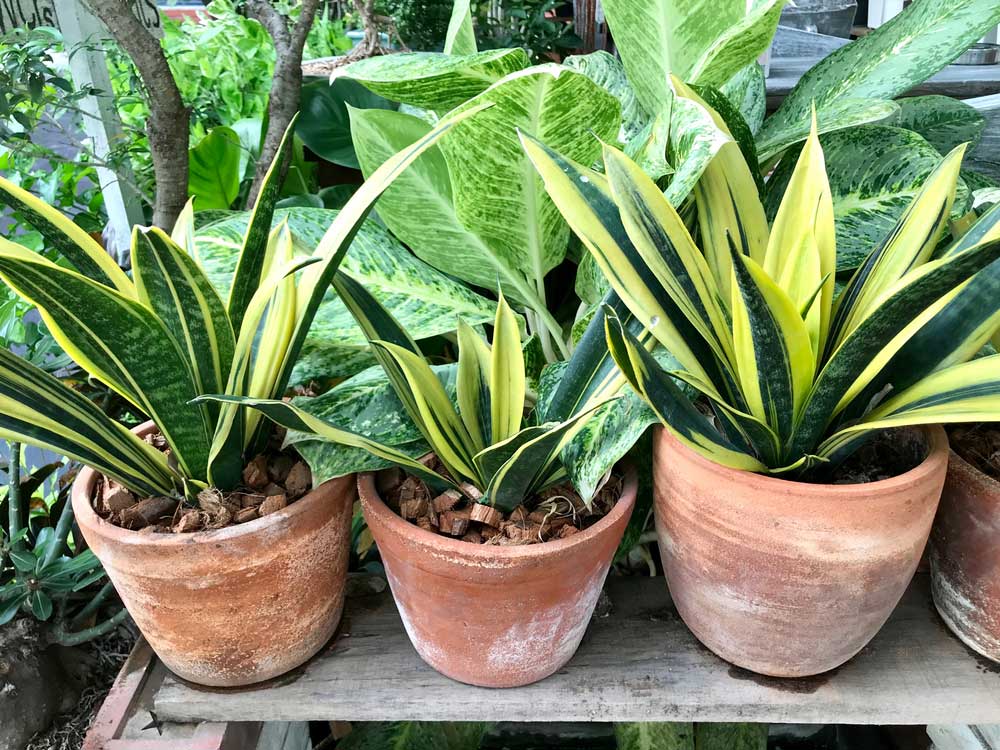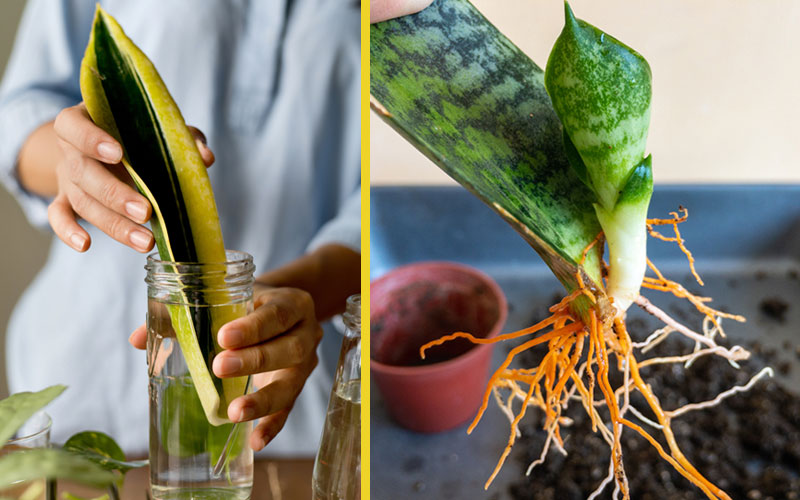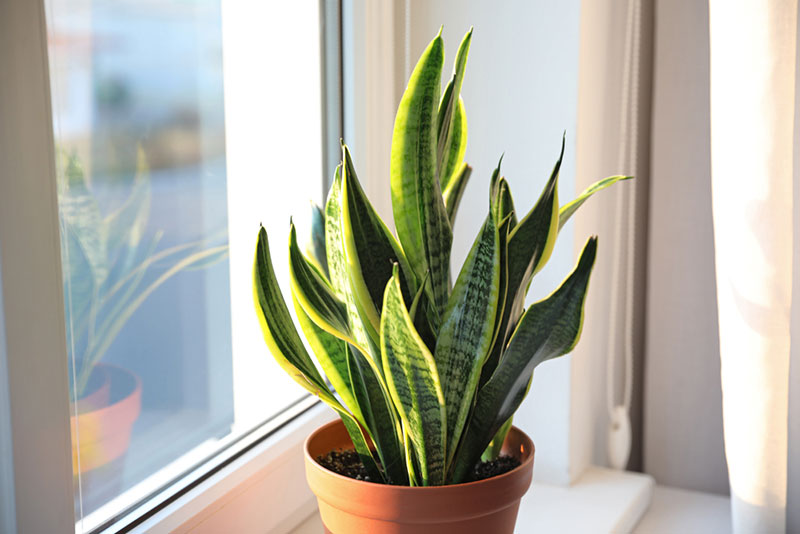
The snake plant (Sansevieria trifasciata) is one of the easiest houseplants to take care of, which explains its popularity. Not only are they rugged plants that require very little maintenance, but they also have a striking appearance that adds character and color to any room.
To help you get to the bottom of your snake plant’s yellowing leaves, we are going to explore some of the most common causes of this condition, which will help you save your plant and prevent the issue from recurring or becoming worse.
The Main Causes of Yellowing Snake Plant Leaves
Overexposure to Direct Sunlight:
While snake plants do well with plenty of natural light, some plant owners take things too far and place their snake plants in an extremely sunny location. When the leaves get too much direct sunlight, they can begin to burn, which will give them a yellowish-brown appearance.
This over-exposure tends to happen when the plant is positioned directly near a window, where the glass can cause a magnifying effect that concentrates the light to certain spots on the leaves. If you are worried that your snake plant’s leaves are scorching from the sun, you can reposition the plant in a location where it will receive bright yet indirect light.
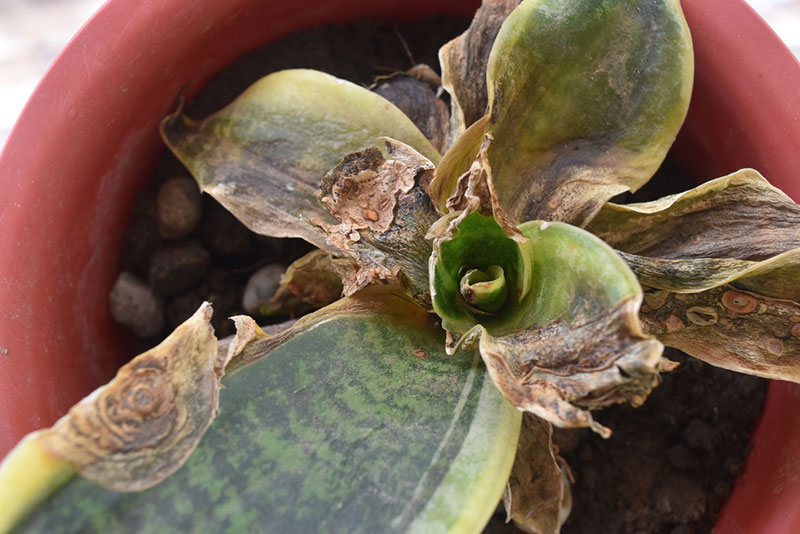
Root Rot:
While it is true that snake plants are quite resilient plants, they are susceptible to root rot, which can cause the long and pointy leaves to turn yellow. Root rot can occur for several reasons. While overwatering the plant is the most common cause of root rot, the following situations can also cause root-related issues:
- Improper soil that does not drain properly
- Water pooling at the bottom of the pot
- Compact soil that does not allow for air circulation
Essentially, root rot can become an issue for many reasons, but the principal cause tends to be exposure to an unfavorable growing environment.
The plant will suffer the most if it is continually over-watered. Snake plants only require watering when the soil is almost dry. If water is becoming trapped in the soil or the watering schedule is too frequent, the roots can begin to rot, and the leaves will turn an unappealing shade of yellow.
Following an appropriate watering schedule and maintaining proper drainage by ensuring your snake plant is in an appropriate container with a loose, fast-drying soil mix should help you prevent overwatering issues.
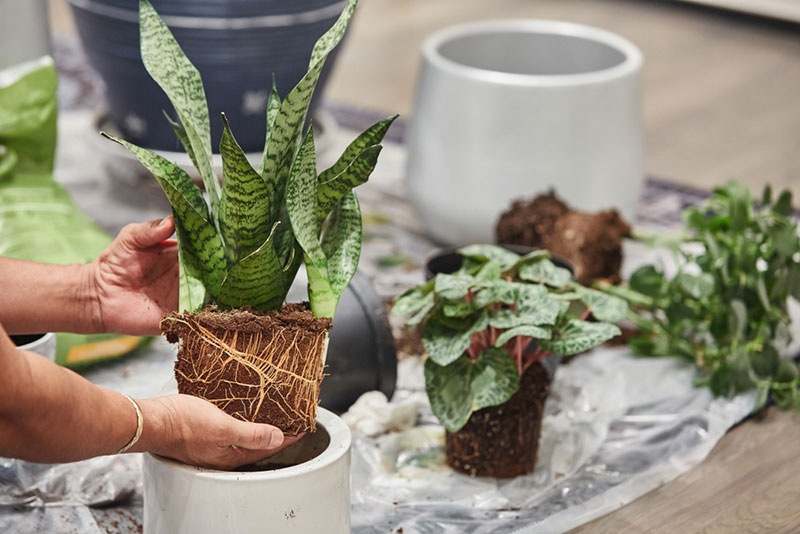
Frequent Temperature Fluctuations:
As with most houseplants, snake plants do not do well when exposed to substantial temperature fluctuations. While they are fairly rugged houseplants, they do not do well when exposed to sudden and drastic changes in temperature.
Whether that means the temperature increases or decreases rapidly, these sudden changes can put a significant amount of stress on the plant, which can cause the leaves to turn yellow.
It is not a good idea to move your snake plant from one location to another regularly, especially if you are moving the plant from inside to outside frequently. You should also avoid placing your snake plant anywhere near a heating unit or air conditioning vent, as the regular changes in air temperature will impact the plant’s overall health and cause the leaves to turn yellow.
Over Fertilization:
When it comes to fertilizer and snake plants, too much of a good thing can be an issue. The truth is, snake plants require very little fertilizer to thrive. Excessive fertilizer often causes leaf burn, which can present itself in the form of yellowed leaves.
Fertilizers can also absorb some of the moisture in the soil, which can reduce the plant’s ability to absorb the water and nutrients it requires from the soil, which, again, can cause the leaves to turn yellow.
If you suspect that your snake plant’s leaves have turned yellow from over-fertilization, do not add fertilizer to the soil for at least a few weeks and see if that improves the situation. Ideally, you would not fertilize your snake plant more than once every one to two months.
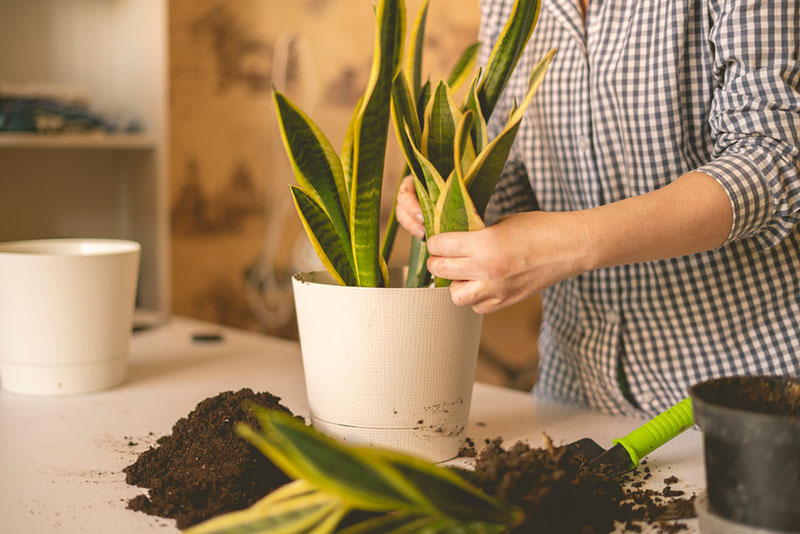
Pests and Fungal Issues:
Fungal diseases, as well as various pest infestations, like spider mites and mealybugs, can have a direct impact on the color of your snake plant’s leaves. Often, these issues are made worse when the soil is waterlogged and unable to drain properly.
If you suspect your snake plant is suffering from a fungal issue or insect infestation, isolate the plant and reduce the frequency of your watering schedule. If the situation does not improve, you can wipe the leaves and re-pot the plant in fresh soil.
Final Words
Snake plants are fairly easy to care for. Avoiding overwatering the plant and ensuring it has a stable environment with plenty of indirect sunlight should help you avoid yellowed leaves and raise a healthy snake plant.
Related Articles
- 12 Different Types of Snake Plants
- How to Grow and Care for Snake Plants
- Tips on Propagating a Snake Plant in Water





